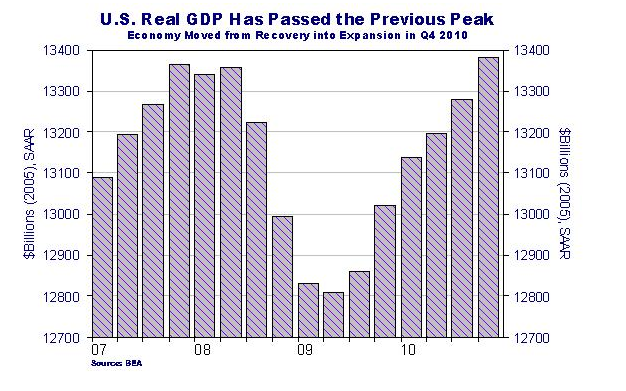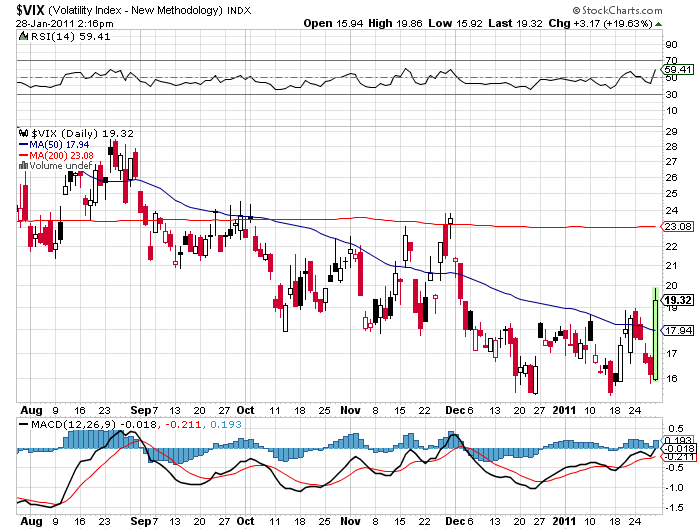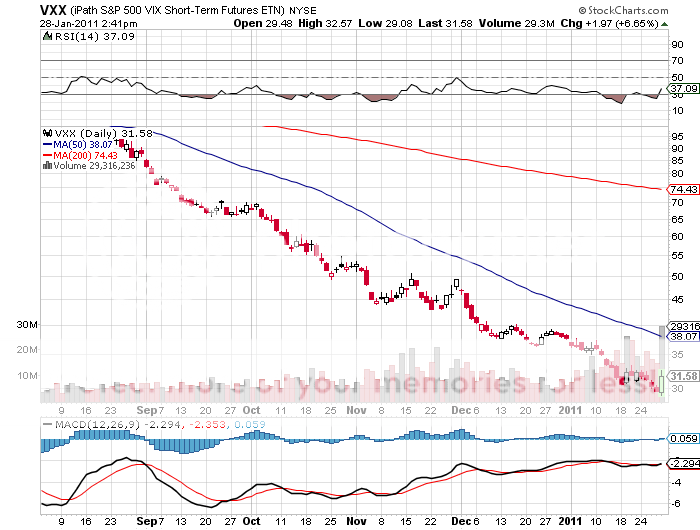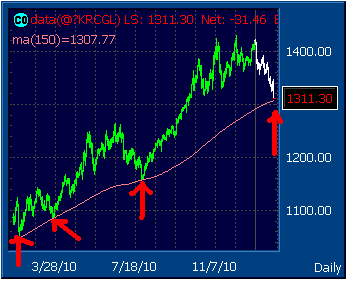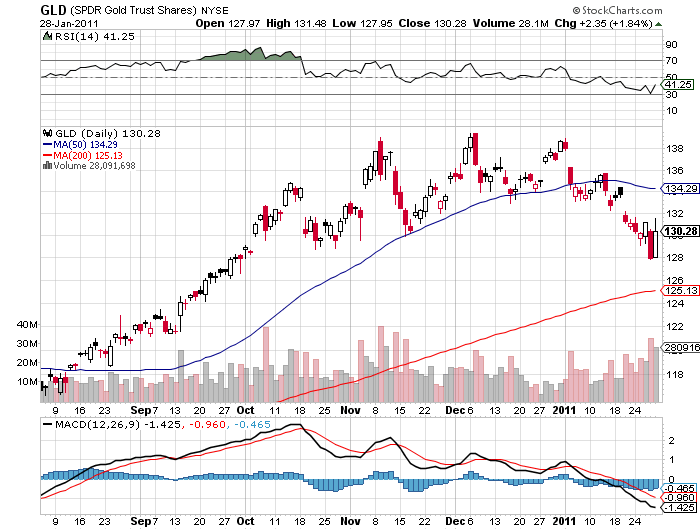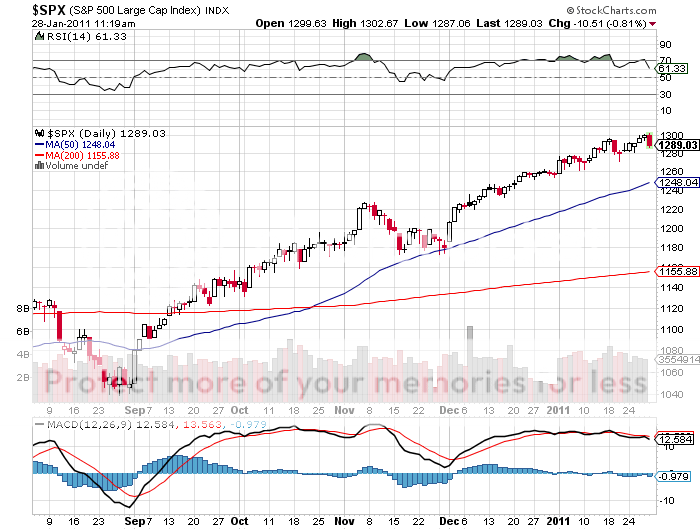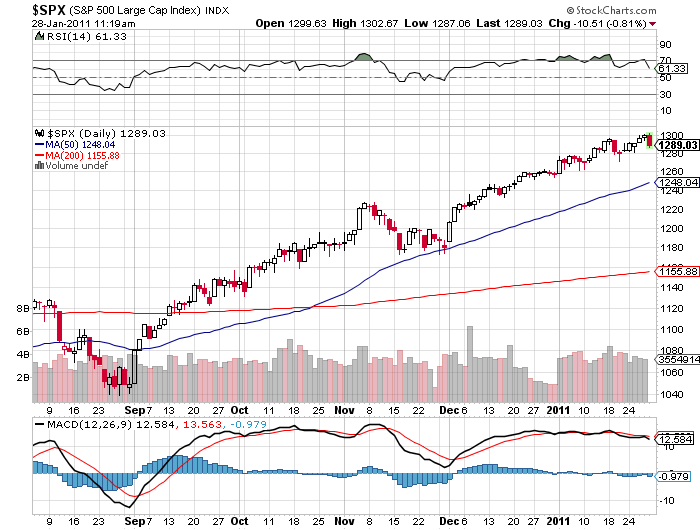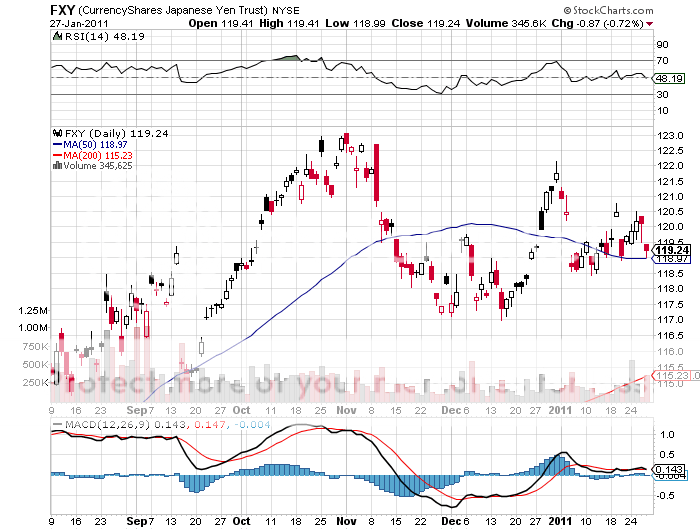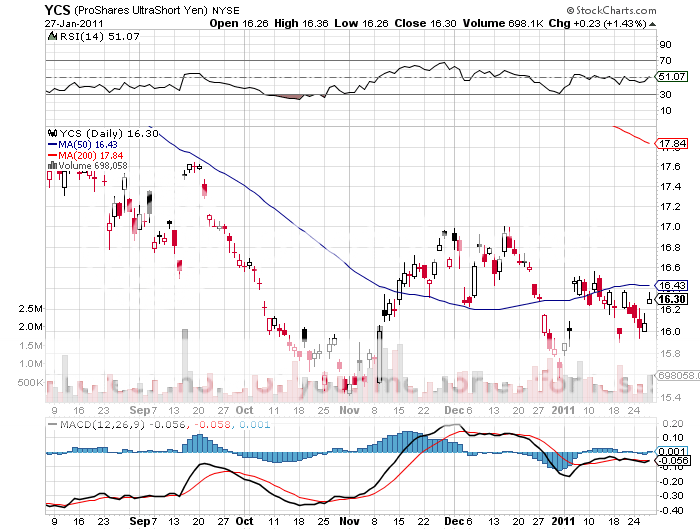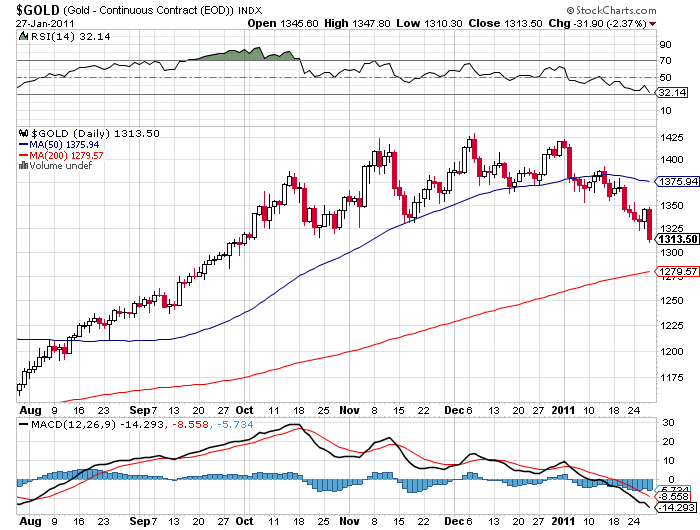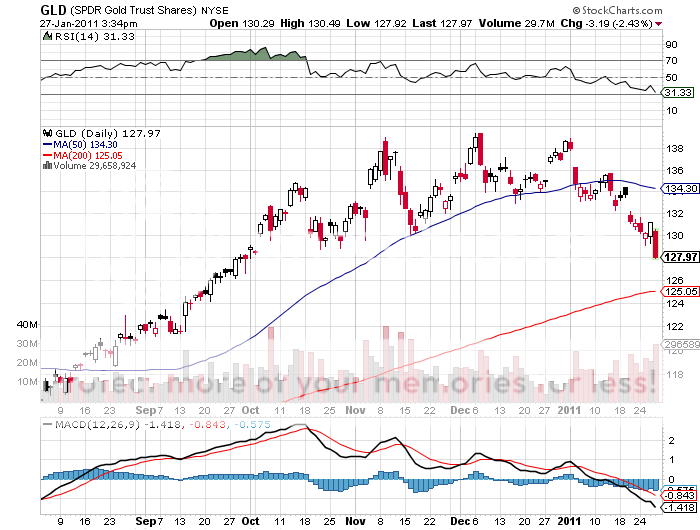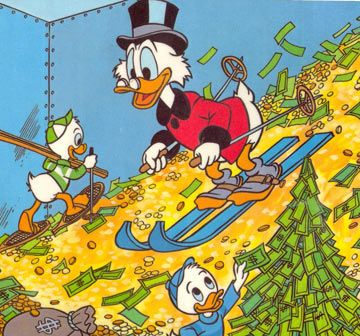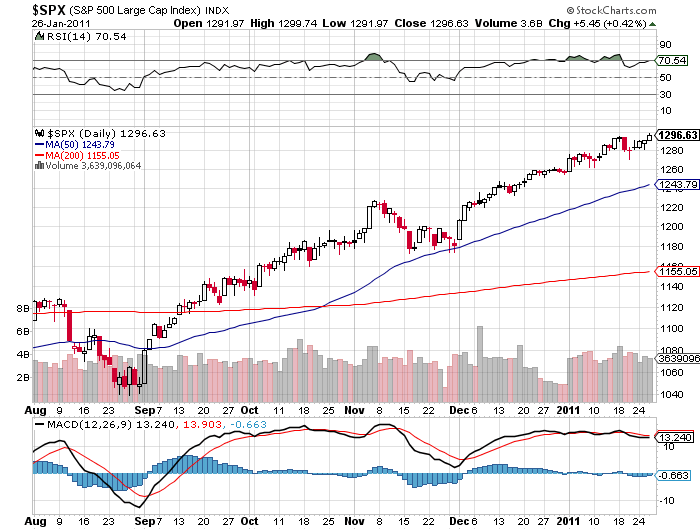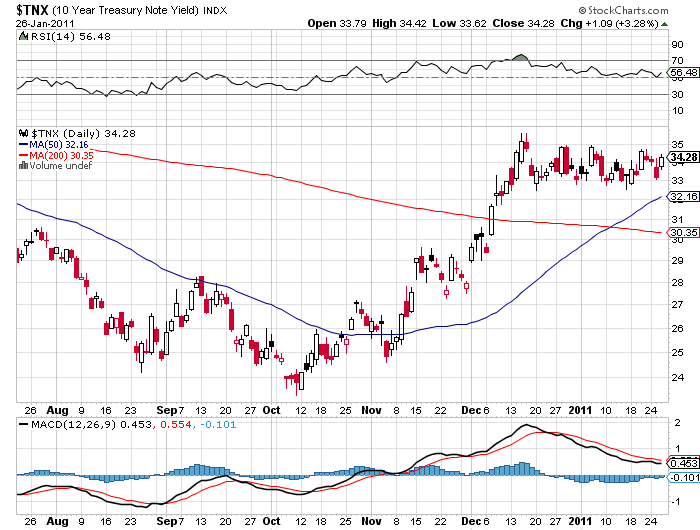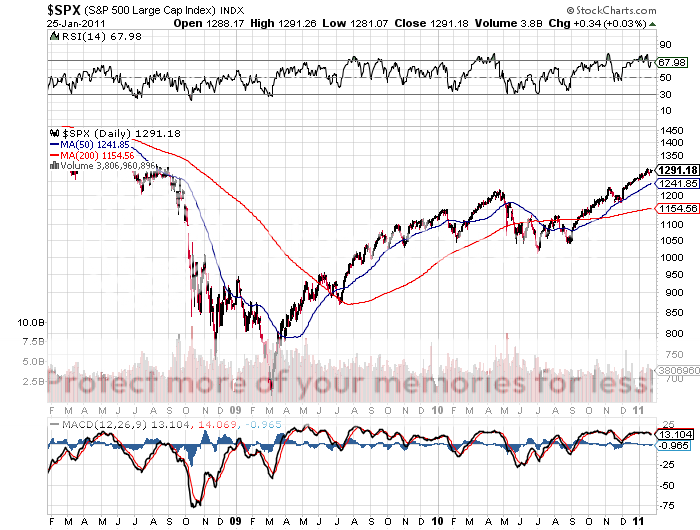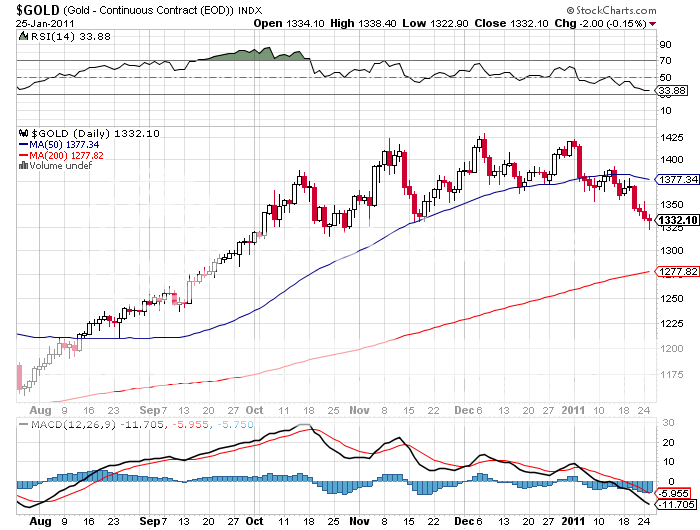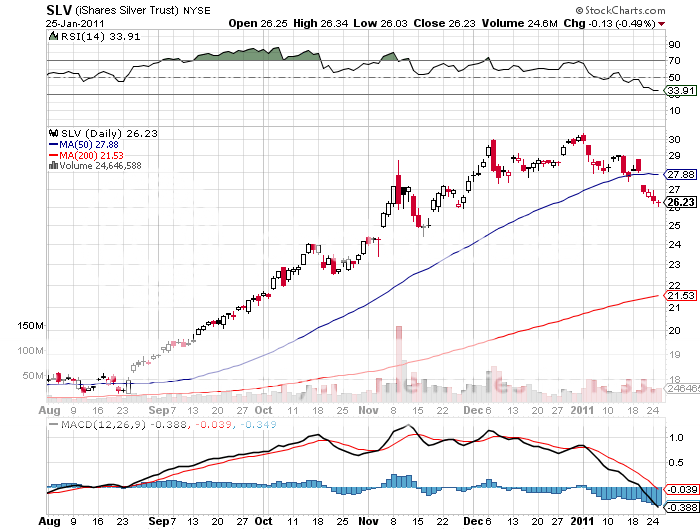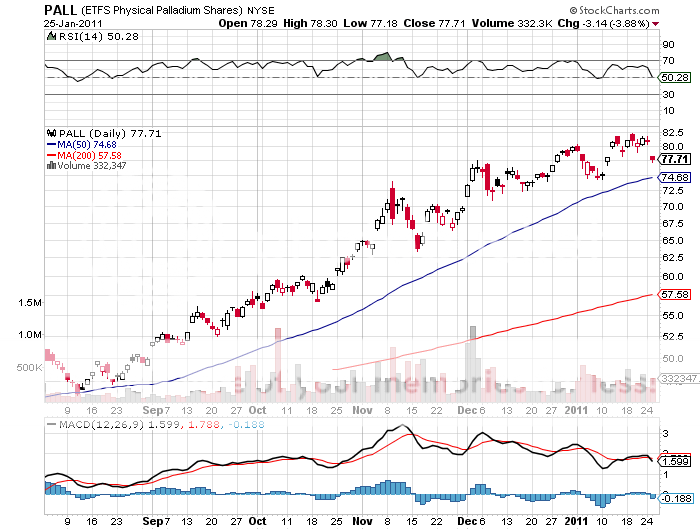
Featured Trades: (THE VIX SPIKE), (VXX), (Q4 GDP)
1) Learning About VIX the Hard Way. We certainly received a highly instructive lesson on how the volatility index (VIX) works on Friday. All it took was a ten point drop in the S&P 500 to trigger a stampede to buy insurance against further declines, taking the closely watched barometer from $15.90 to $20 in hours. It was only three days ago that I urged readers to buy flood insurance while the sun was shining. Good luck getting it now with a torrential thunderstorm overhead.
There were more potential culprits for the washout than found in an Agatha Christie murder mystery. You knew it was going to be a tough day when Amazon (AMZN) came in with a big earnings disappointment. Then Ford Motors (F) followed with its own huge shortfall.? The riots in Egypt threatened a cut off of the Suez Canal, sending oil prices soaring. A much ballyhooed Q4 US GDP, expected to run as hot as 4%, came in at a still robust 3.2%, disappointing many bulls. Given that corporations have been reporting earnings at a torrid pace, some 70% beating analysts' forecasts, even I was taken aback when I first heard the number. Spending on government stimulus efforts seems to be bleeding off faster than expected.
Once the selling started, virtually every technician out there started setting off emergency flares. The lead bellwether stocks for the market, like Apple (AAPL), Caterpillar (CAT), and Goldman Sachs (GS) started hitting the floor like a prom dress. The glass has suddenly gone from half full to half empty. The cat was set amongst the pigeons when NASDAQ's automated order system for options briefly broke down because of an imbalance of sell orders.
My friend, technical analyst to the stars, Charles Nenner, warned you on January 10 that the markets would peak on January 26 (click here for the interview on Hedge Fund Radio). Really, Charles! You're slipping in your old age. You were two days early this time!
For those who are unable to engage in the long (VIX) options strategies that I have been recommending, and prefer an instrument that can be easily traded in a simple online equities trading account, you might take a look at the IPath S&P 500 VIX Short Term Futures exchange traded note (VXX) (click here for the prospectus). The (VXX) gives investors a slightly different, non-leveraged volatility play on the (VIX), as it is concentrated in S&P 500 options for only the front two months. You will, therefore, see divergences between the two, especially when short term volatility gaps against long term volatility. On Friday, the (VXX) popped 7% during the carnage.
-
-
-
Do You Understand the VIX Now?
Featured Trades: (GOLD), (GLD), (DGZ), (GLL)
2) So Close, Yet So Far on Gold. Close, but no cigar on getting out of my gold puts on Friday. We opened low enough on Friday morning to get within striking distance of my downside target for the barbarous relic at $1,280. But once the rout in equities started in earnest, it was off to the races for gold, and it was all over for gold put holders but the crying. Gold managed to pull a $36 rally out of the hat on aggressive short covering before giving up $10 at the close.
We knew all along that gold was never going to make it to $1,280 in one straight shot. If you want to see why long term bulls are so determined that this level will hold, take a look at the chart below, which shows the convergence of several trend lines around my target. I think we'll take another shot at the downside, in days, if not weeks, and double bottom at the very least. Keep in mind, also, that owners of the gold put spread have time decay working in their favor now, as we are so solidly in the money.
-
-
Gold Sure Was Getting Cheap
Featured Trades: (TBT)
3) Taking Some Cover on the (TBT). The global equity markets are 'cruisin for a bruisin.' They are so overextended on the charts it is frightening, and the time to pay the piper is coming. I'm not looking for a collapse, just a missionary style 5%, 60 point correction, to at least the 50 moving average at 1,248 in the S&P 500, and then some.
If this happens, there will be the inevitable flight to safety into Treasury securities, not that it is justified in any way. This could give the ProShares Ultra Short Lehman 20+ Year Treasury ETF (TBT), the 200% leveraged bear play on long dated Treasury paper, a brief hickey. So I am going to step out of the way here and sell my modest 10% portfolio weighting in this ETF at today's opening at $39.06.
I still think that Treasury bonds are the world's most overvalued asset and that you should be selling every rally for the next ten years. But to sell the rallies you have to buy the dips, hence the logic behind my action. Use the news that came out yesterday to raise some cash; that the US budget deficit is rising back to $1.5 trillion during fiscal year 2011, which delivered a nice 1 ? point pop in the (TBT).? I'll look to buy the position back a few points lower down.
And by the way, if we do get a larger equity sell off, our short positions in the S&P 500 and the euro and our long position in the (VIX) are going to be looking pretty good.
-
-
It's Time to Pay Up, Matey
Featured Trades: (JAPAN'S BILL IS NOW DUE), (YCS), (FXY)
2) Japan's Bill Is Now Due. Do the hard work and the accidents happen in your favor. This is what I have been hammering away with at my junior traders and analysts for decades. You won't find a more clear illustration of this time worn maxim than Standard & Poors' surprise of Japanese government debt last light, from AA to AA-.
No one has trumpeted from the roof tops Japan's shortcomings louder than I. The world's worst managed economy with the bleakest outlook and the lowest yielding currency boasts a debt to GDP ratio approaching an oxygen gasping 200%. Yet the country boasts the world's strongest bond and currency markets, despite numerous efforts by the Tokyo government to torpedo them.
It couldn't last forever. I predict that this is first of many more downgrades by Standard & Poors' and others that are about to plague the Land of the Rising Sun. Expect this dismal prospect to feed into a weaker yen sooner than latter. Efforts to staunch bleeding deficits, such as through raising the national sales tax above 5%, will amount to a feeble Band-Aide solution at best.
It is just a matter of time before the global bond vigilantes tire of beating up on tired Europe and refocus their efforts on Japan, where the ten year government bond yields a laughable 1.23%. That is why I have been stubbornly persisting in my bearish call on the Japanese currency, recommending the double leveraged short ETF, (YCS).
-
-
Featured Trades: (THE GOLD MELTDOWN), (GLD), (GLL), (DGZ)
3) The Gold Sell Off Accelerates. Two weeks ago, I urged readers to take advantage of the coming collapse in gold. This development is now well in progress, and is accelerating faster than I anticipated. Perhaps I gave it a push?
Things are happening so fast in the gold pits that it feels like the clock is on fast forward. The markets were rife today with rumors of margin calls and distressed liquidations by hedge funds and nervous gold bugs alike. The barbarous relic cut through my first support level at $1,325 like a hot knife through butter, and is clearing taking a run at the next support at the 200 moving day average at 1,280, and $125 for (GLD).
This should provide much stronger support, and should hold at the first several attempts. Since market conditions are so wild and chaotic, it would be wise to enter a limit order ahead of time to come out of your bear put spread at $2.80. That way, if there is another sudden $30 spike down in the yellow metal, and then a $30 short covering rally, you'll clean up through buying a the market bottom. Just make it a day order only for Friday, January 28, because next week the world could look totally different.
For the 'Macro Millionaires' who followed my lead and bought the (GLD) bear put spread two weeks ago, you'll be making a quick 87% profit you get filled. That will add 4.33% to the total value of your portfolio. That is better than a poke in the eye with a sharp stick. Those hardy souls who bought the $132 (GLD) puts outright are up 300%.
Good for you. A collapsing market is causing traders to tear their hair out, investors to make anguished calls to their brokers, and margin clerks to go apoplectic. And guess what? You're short! Don't you just wish you knew someone like me in 2008, when these meltdowns were happening almost every day?
-
-
-
4) Testimonial. 'For the past three years, I have followed the advice of another 'trading' subscription. During the two months that I have participated in your 'Mad Hedge Fund Trader' recommended trades, I have banked and surpassed my gains of those three years. Plus your recommended trades that I am currently holding have a similar paper gain. Wow! In two months, I have made six times what I accomplished in three years! I am certainly looking forward to greater achievements in the future.
Mort
Tamarac, Florida
'It is almost dishonest to build up an accumulated debt for the Congress of the United States to meet in 1980. We can't do that. We can't sell the United States short in 1980, any more than in 1935,' said Franklin Delano Roosevelt about his efforts to fund social security entirely from its own revenues.
Featured Trades: (ANOTHER NAIL IN THE COFFIN FOR GLOBAL MARKETS), (SPX), (SPY), (TNX)
1) Another Nail in the Market's Coffin. I think it was very interesting not to see what happened today, but what didn't. The Federal Reserve announced that it would continue its purchase of $600 billion in debt securities and keep interest rates low for the indefinite future. What did the markets do? The Dow rose by 0.07%, the S&P 500 by 0.42%, and yields on ten year Treasury bonds rose by five basis points. Everyone was expecting a bang, and got a whimper instead.
To me, the muted reaction is another nail in the coffin of the current rally in global asset prices. We could get a bump in markets on Friday when Q4, 2010 US GDP comes out better than expected, possibly as hot as 3.5%-4%. Then you get the new monthly asset reallocation on Tuesday, February 1, which will almost certainly favor paper assets over hard ones. Beyond that, I don't see much on the horizon to keep powering prices higher for the short term. We are at the stage in this party where the waiters are piling the chairs on the tables, flickering the lights, and all of a sudden, the few remaining available women all start to look beautiful. If the S&P 500 does tack on a few dozen points in the next week, I will be inclined to double up, rather than run from the shorts that I already have.
-
-
Featured Trades: (WHAT OUT FOR THE BLACK SWANS)
1) Watch out for the Black Swans. It is not my intention to ruin your day. But I may well do that if you read this piece. While traders pile on their longs with reckless abandon, and retail flows into equity mutual funds turn positive for the first time in two years, I am hearing a rising tide of negativity from the jungle telegraph. There are 'black swans' circling out there everywhere, and the risk is that they alight upon us in great unexpected flocks, like a scene out of Alfred Hitchcock's classic film, The Birds.
Let me give you a list of things that can go wrong this year:
*The ten year Treasury bond spikes to 5% and money gets expensive.
*Crude soars to $120 a barrel and gasoline rises to $4 a gallon.
*Europe blows up again, sending the dollar through the roof.
*Seeing stock prices soar, Ben Bernanke ends QE2 early, paring it down to QE 1?.
*The high frequency traders and quants hungry for a mean reversion smell blood in the water and trigger another 'flash crash.'
*Retails investors conclude they were right to stay away and bail on what they have remaining.
And here is the scariest thing of all. All of these black swans could hit at the same time and reinforce each other, possible around March or April, triggering the recurrent double dip fears. Could this be the third consecutive 'sell in May and go away' year? This conjures up the vision of a 'ground hog year', where 2011 is a carbon copy of 2010.? A strong first quarter is followed by two dead quarters, and then a strong year end finish. This is what 'lost decades' look like. Look at the 20 year chart of the (SPY) below and tell me this isn't happening.
Of course, this is just one of many possible scenarios that could play out this year. As for me, I'm booking my chalet in Zermatt in the Swiss Alps now to beat out the rest of you.
-
Will the Black Swans Come Like This?
-
Or This?
-
A Much Nicer Alternative
Featured Trades: (BEWARE THE COMING COLLAPSE OF GOLD),
(GLD), (SLV), (PPLT), (PALL), (GLL), (DGZ)
2) Beware the Coming Collapse of Gold. Last year's sure thing is rapidly turning into this year's sure loser. After bringing in a torrid 29% return in 2010, the barbarous relic has only managed a flaccid 7% loss so far this year, much to the distress of hedge funds and gold bugs alike. The triple top on the charts that set up over the last three months could not be more clear. What is giving traders ulcers now is the prospect of a much more serious sell off in the yellow metal in coming weeks and months.
They are right to be worried. The shift out of hard assets and into paper ones, like stocks, has been undeniable in 2011. One of the main drivers for gold in recent years has been buying from a newly enriched middle class in emerging nations. They have been joined by their own central banks, which have been scrambling to find alternatives to the US dollar to store massive reserves generated by record trade surpluses.
It's looking like inflation fears are going to pee on this parade. A witch's brew of rising commodity prices, soaring real estate, and increased wage demands has sent inflation over 5% in China. Much higher figures can be found in India and Vietnam. This is prompting governments to sharply raise local interest rates, making gold a less attractive investment alternative.
That's just for starters. The CFTC has already raised margin requirements for the entire metals complex to dampen unwarranted speculation. While JP Morgan and Goldman Sachs managed to get 'grandfather' exemptions to keep the markets open (as I do), most smaller players are having to pay up, increasing the amount of capital they must commit to each trade, reducing returns. Small and medium sized hedge funds and wealthy individuals trading on margin provided much of the juice for last year's bull market.
Have you seen all of those late night ads on TV offering to buy your old gold? These fly by night companies have send scrapage supplies soaring to four times 2009 levels, even though they often only offer ten cents on the dollar. The rise of this new supply has been so fast that many wholesalers are becoming glutted with inventory.
The selling has been so aggressive, that it has spread like an out of control virus to the rest of the entire metals complex. So far this year, silver (SLV) is down 8.5%, and platinum (PPLT) %. To throw the fat on the fire, one large hedge fund was seen yesterday unloading a long term position which took it down to a new three month low at $1,224. Others such hurried liquidations are expected to follow. This is truly the commodity that takes the stairs up and the elevator down.
To prove that I put money where my mouth is, I have been actively shorting gold for the last few weeks. 'Macro Millionaires' who followed me into my options play are now up 25% in ten trading days, and have been up as much as 35%. If you can't, or don't want to put the options trade on, you can look at the 1X short gold ETF, (DGZ), or the leveraged 2X ultra short version (GLL).
How far can gold fall? Let me provide some frightening downside targets:
*$1,324 '? The October and November support level we touched today.
*$1,277 '? The 200 day moving average, the next stop.
*$1,150 '? The summer, 2010 low.
*$1,050 '? The old resistance level that was shattered in October, 2009 by the Reserve Bank of India 200 tonne purchase.
*$1,000 '? Worst case technical support suggested by analyst Charles Nenner.
Mind you, I think gold is still going up long term, and think that the old inflation adjusted high of $2,300 is a chip shot in a couple of years (click here for 'The Ultra Bull Case for Gold'). This is just a little counter trend scalp to take advantage of overly bullish traders who have been caught off guard.
-
-
-
Gold Has Been a Real Killer This Year

